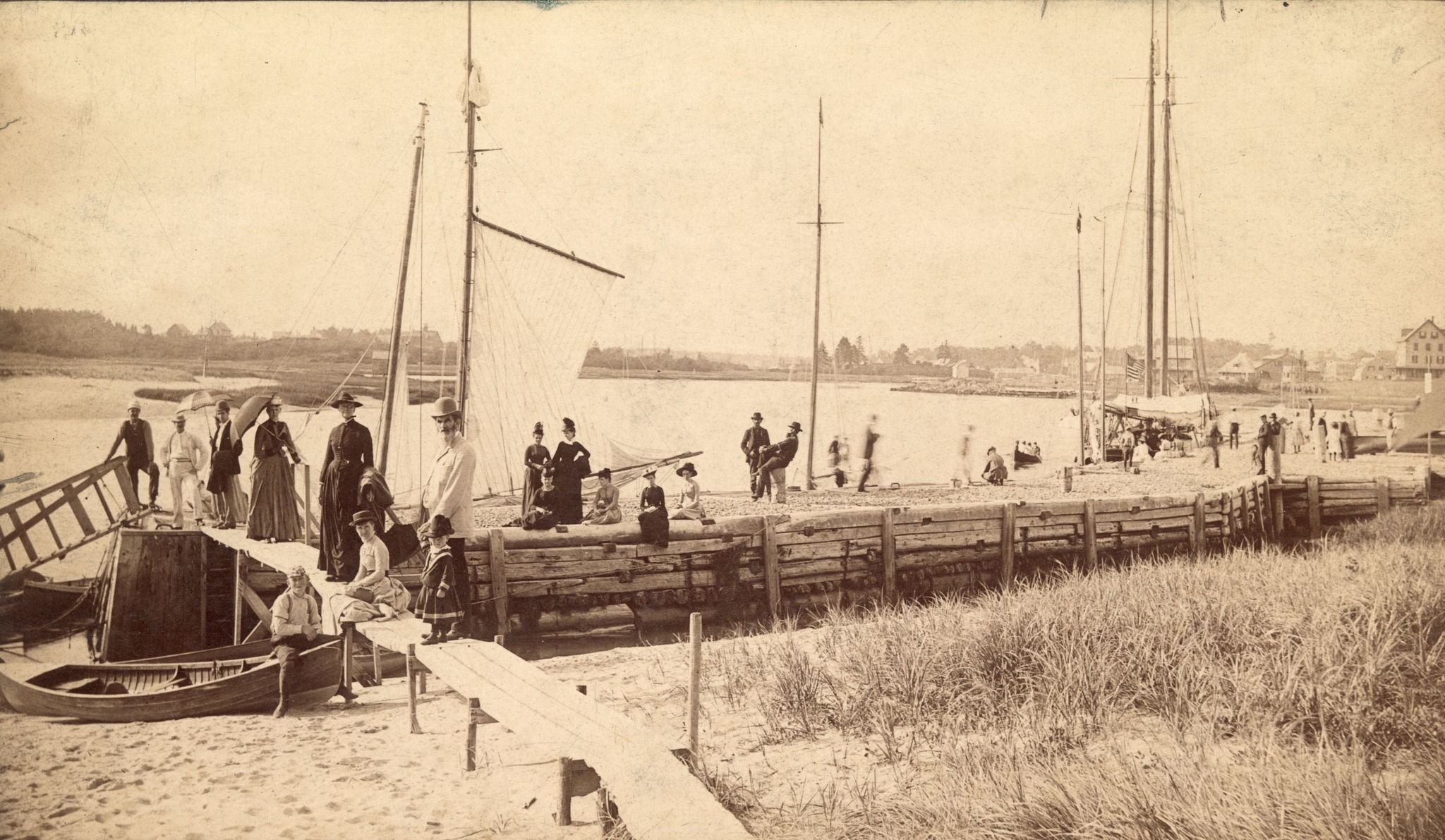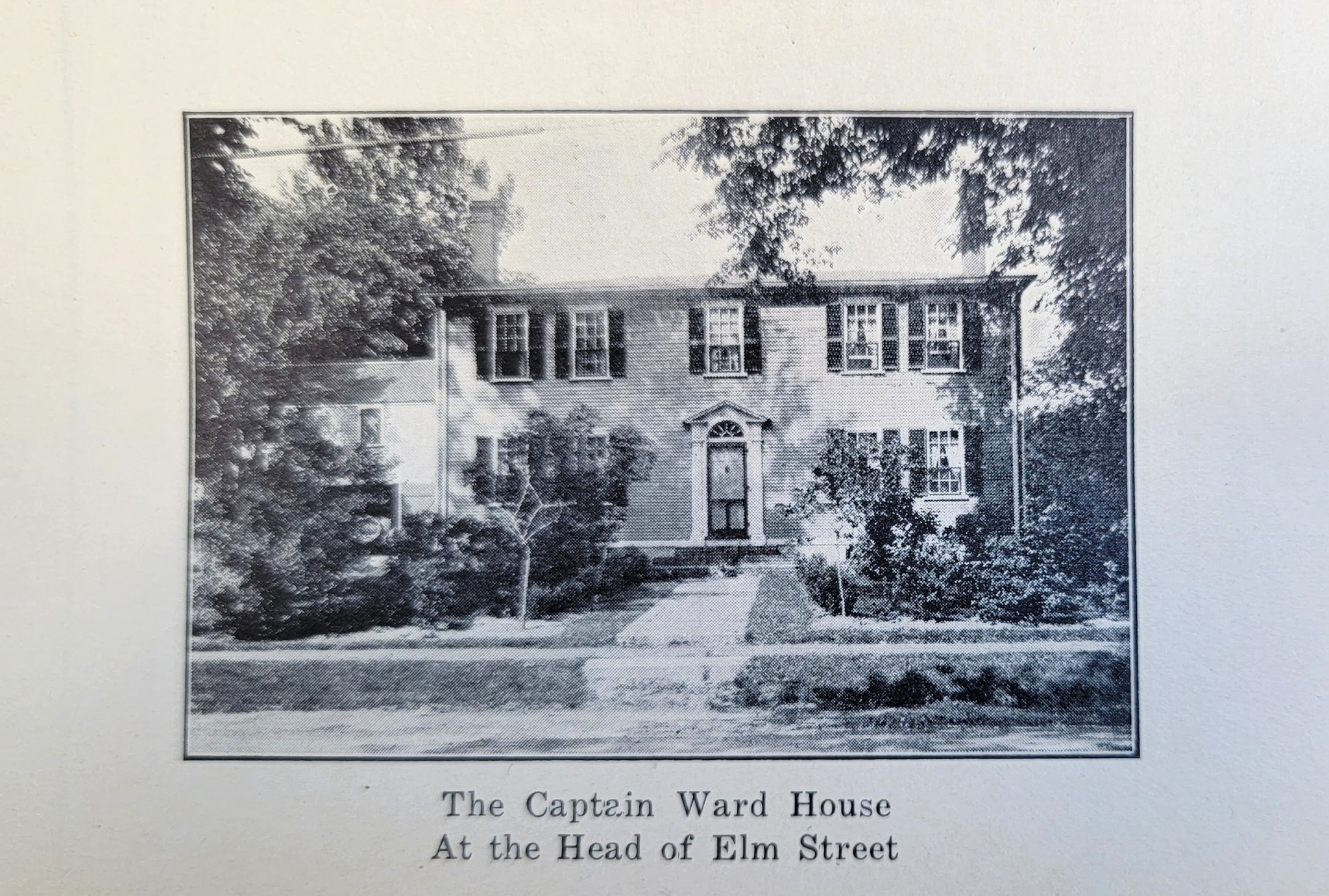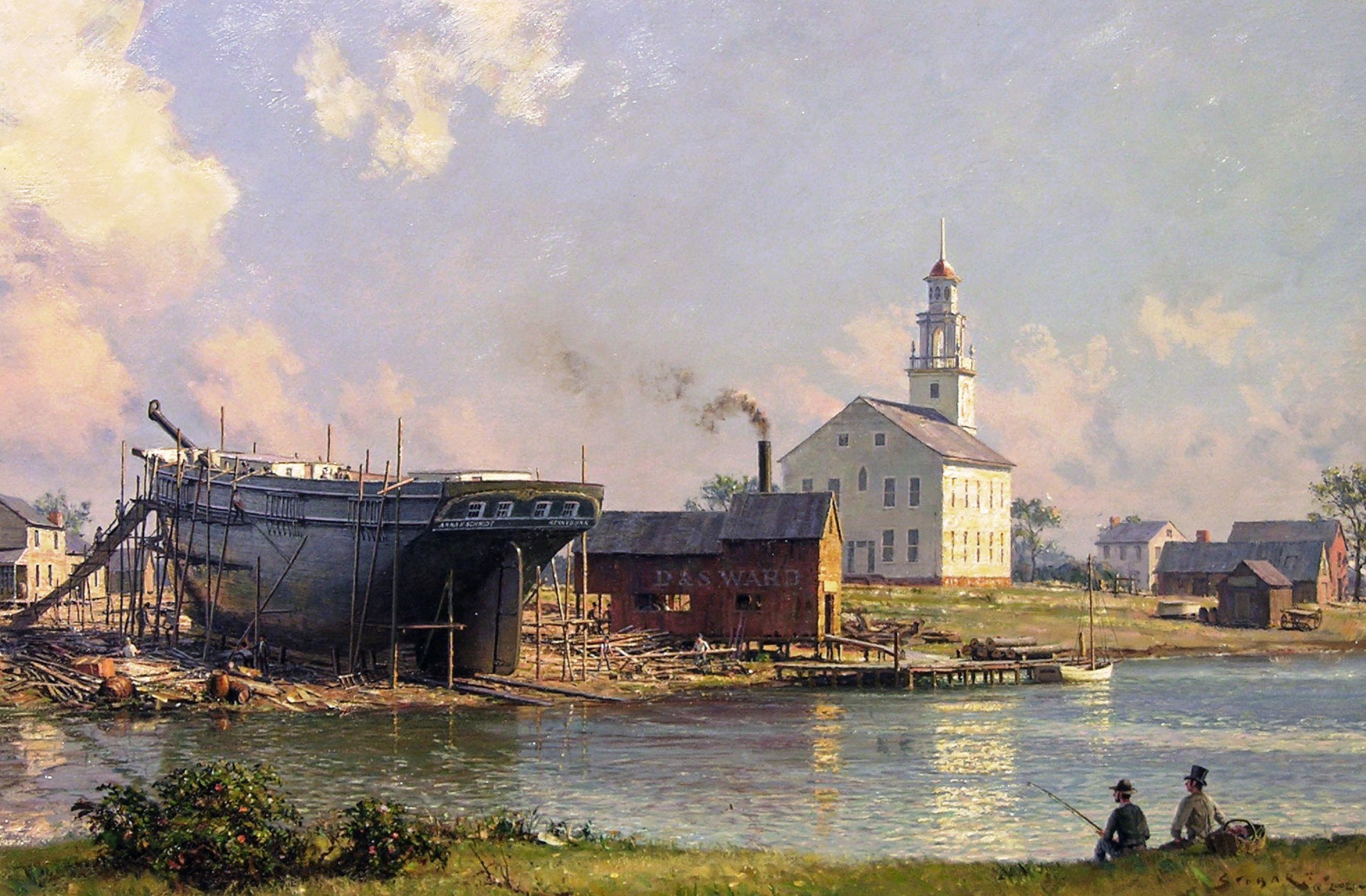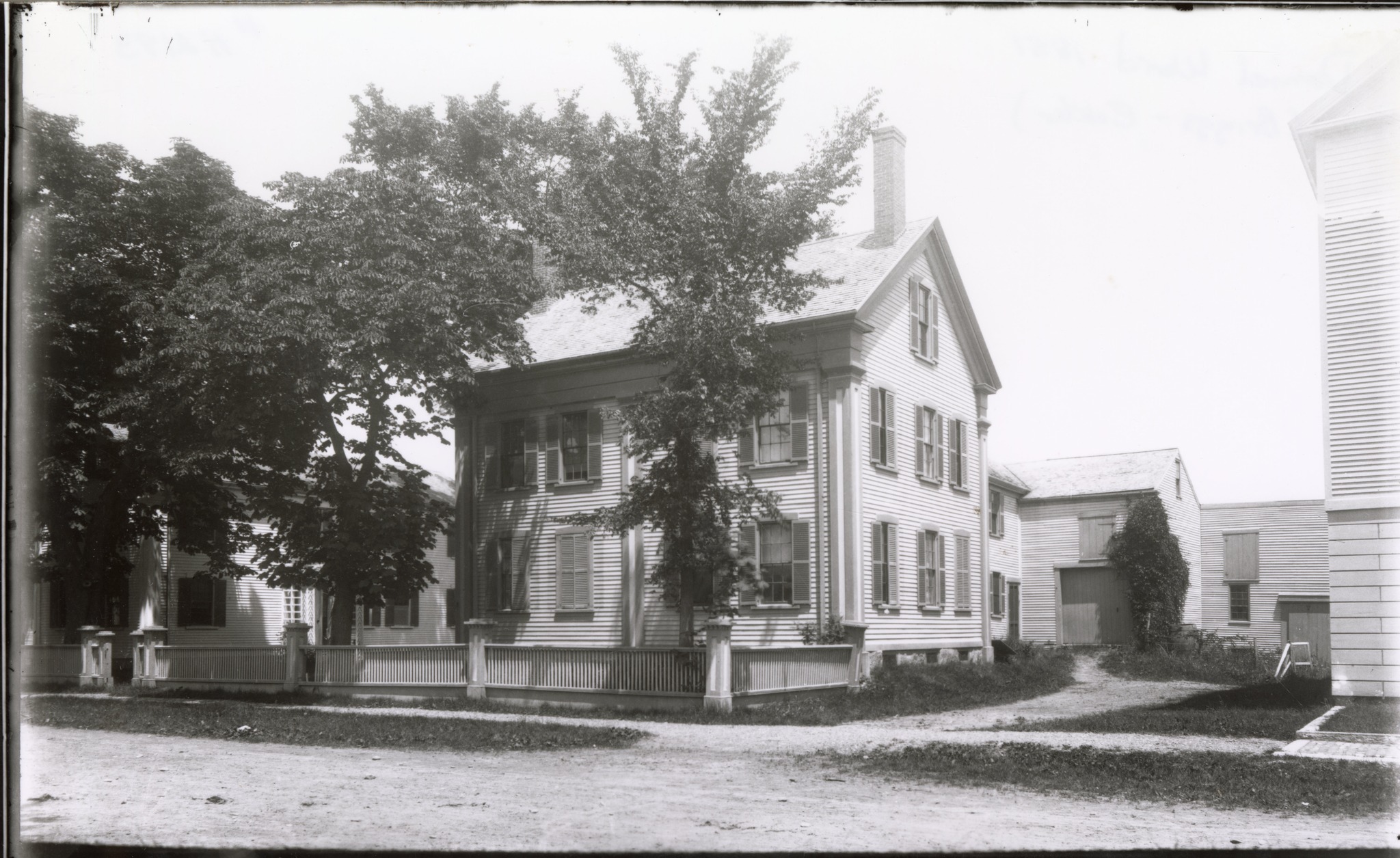Ward Family Houses in Kennebunkport
The Wards are one of those Kennebunkport families that keep popping up in my local history research. Nathaniel Ward moved here from Salem, Massachusetts in 1789. He married ferryman Shephen Harding’s daughter. When Lydia Harding Ward died, part of her father’s property near the mouth of the Kennebunk River was sold by the Ward Family to the United States Government. We all know that property today as Government Wharf.
Nathaniel Ward’s eldest son, Nathaniel, Jr., a boatbuilder, built a house at the corner of Maine and School Streets in 1812. His son Charles, whom I have featured in several articles, was the second American Consul to Zanzibar when their slave market was world-famous.
Nathaniel’s two sons Daniel and Stephen Ward built ships in Dock Square in the 1840s and developed the land on the riverside near South Congregation Church as the D&S Ward Shipyard in 1851. The image of the shipyard I shared today is a painting by artist John Stobart. His dear friend Frank Handlen and I shared the history of the shipyard with Stobart when he was painting it. This was the shipyard where David Clark ended his career.
Danial Ward lived at Mill Floss on Maine Street. That house eventually became Mast Cove Gallery where artist Frank Handlen’s paintings were featured. Shipbuilder, Stephen Ward lived on Pearl Street in the house that the first Maine State Historian, Henry Burrage, would later own. I have written many times about D&S Ward and the Burrage Family.
Shipbuilder Stephen’s son Charles was a Lower Village shipbuilder during the last chapter of shipbuilding in the District of Kennebunk. His son Capt. Henry Ward was a well-known Kennebunkport sea captain until the early 1880s when he came ashore and built the house at the corner of Maine and Pearl for his family. Henry’s son Stephen H. Ward, who inherited Henry’s house, was a long-time employee for the Atlantic Shoreline Railway, Kennebunkport Postmaster, and Kennebunkport Tax Collector.
Former Ward properties are all around the village. Though the family is no longer here, the role they played in making Kennebunkport what it is today is undeniable.









Leave a Reply